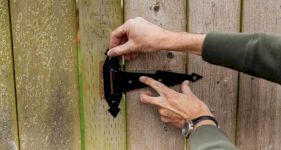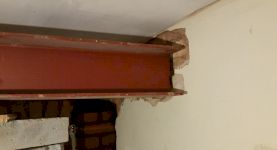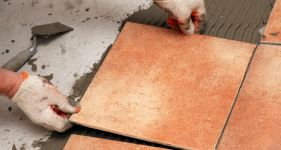Toilet Installation Guide
Installing a toilet sounds difficult as you think there will be lots of connections to make sure your toilet works properly. However, the process is easy depending on your new toilet and whether you follow what you are meant to do.
This article will provide everything you need to know when installing a toilet DIY or if you want a tradesperson to come out and help you install your toilet.
Therefore, everything such as the cost, labour prices, DIY, the pros and cons of installing a toilet, different design ideas and what to look for when hiring a tradesperson for help. All of this information will be in this article!
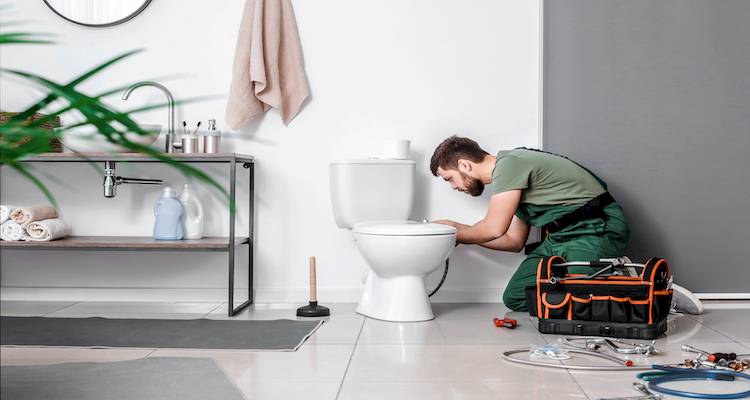
Toilets can be fragile and sometimes be awkward as the way they are built can be confusing.
Therefore, if you are looking at installing it yourself, you need to know what you are doing as you don't want to break it and need to replace your new toilet straight away.
This article will also help you know what to do if you are doing a toilet installation on a budget, as the price of having to install it can sometimes be expensive, so if you want a cheap toilet installation, this article will give you all the information you need to do so!
Table of Contents
- What is Toilet Installation?
- Types of Toilets
- Advantages and Disadvantages of Installing a New Toilet
- How Much Does It Cost to Install a New Toilet?
- How to Install a Toilet
- How Long Does It Take to Install a Toilet?
- Building Regulations & Planning Permission for Toilet Installations
- How to Clean and Maintain a Toilet
- Questions to Ask When Hiring a Toilet Installation Specialist
- FAQs
What is Toilet Installation?
Toilet installation is when you need to put a brand-new toilet in your home. So, whether that means you have broken your old toilet and need to replace it with a new one, you have just moved into your brand-new home and a toilet is not installed, or it's part of a full bathroom installation.
As toilets are important for humans and every household has a toilet, knowing how to install or where to go to get a new toilet is very important because you will need a new toilet at some point in your life.
Knowing when to get a new toilet can be stressful as toilet repairs can happen a lot; however, multiple signs tell you that you should get a new toilet.
For example, if your toilet is constantly clogging, you should replace your current toilet with a more efficient and effective commode if you don't want to lose the water-saving benefits of a low-flush toilet.
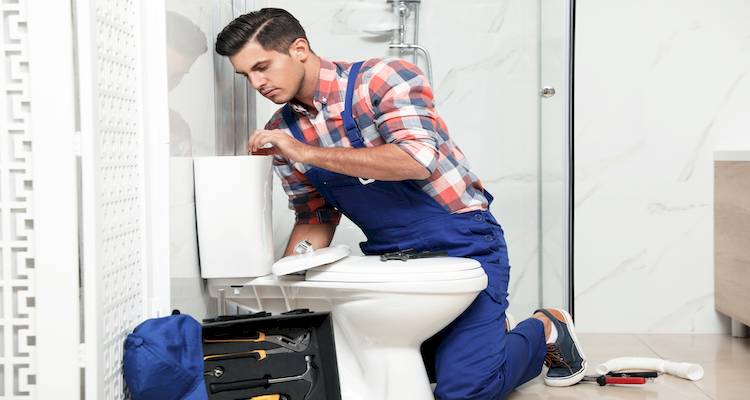
Or if it begins to wobble, then it could just be a case of loose screws. Tightening the bolts and making sure everything is in the right place is simple for a plumber.
However, wobbling can indicate a more serious condition. It's possible that the floor beneath the toilet is deteriorating or water damaged, meaning it's time for a new toilet.
The average toilet has a lifespan of 10-15 years on average. On the other hand, many toilets are only replaced after 25 years of use if they have lasted longer than average.
Some say that the porcelain toilet has a considerably longer lifespan, and that only the internal components need to be repaired or replaced.
Due to this, toilet installation is also popular because most toilets end up having problems such as leaks, not flushing properly, flush handles breaking, and weird smells; therefore, in some cases, people just decide to buy a new toilet and install it themselves rather than ringing a plumber to solve the problem.
Types of Toilets
Here are the different types of toilet available to choose from:
Dual-Flushed Toilets
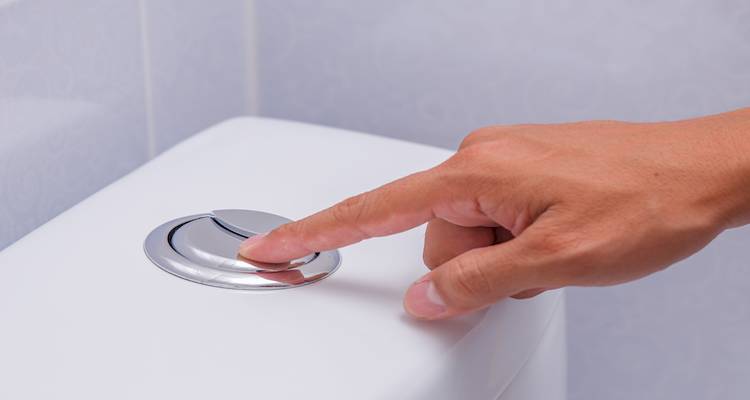
These toilets have a half flush and a full flush option on the flush button, which is where the name comes from. We utilise the half flush for liquid garbage and the full flush for solid waste.
Water efficiency is one of the most significant advantages of a dual-flush toilet. Although they are more expensive, they are better for the environment and your wallet in the long run.
Pros
- ✔ Use less water.
- ✔ Lower water bills over time.
- ✔ Better at cleaning the bowl per flush.
- ✔ Eco friendly.
Cons
- ✖ Wrong button can get pressed, or both at the same time.
- ✖ Repairs can be trickier with a dual flush valve.
Back-to-Wall Toilets
Back-to-wall toilets are a fashionable option. They save space, are pleasing to the eye, and are easy to clean and maintain.
The toilet bowl is attached to the wall, while the cistern is concealed behind a piece of furniture or within the wall.
These toilets are cheaper and easier to instal than wall-hung toilets.
Pros
- ✔ Pipework and cistern are hidden.
- ✔ Easier to clean around the outside.
- ✔ Flushing noise can be slightly muffled.
- ✔ Bathroom looks less cluttered.
Cons
- ✖ Installation can be more expensive.
- ✖ Repairs are through an access panel.
- ✖ Needs more planning.
Wall Hung Toilets
These toilets are mounted on the wall and are elegant and trendy. In addition, because the water tank is built into the wall, they conserve room. These toilets can be costly and time-consuming to install.
To complete the job, you'll need to employ a qualified plumber and possibly a handyman.
The total cost of the wall-hung toilet rises as a result. It's quite simple to sterilise the unit, and it does have certain benefits.
Although they are expensive, there is a variety of them and they are very aesthetically pleasing.
Pros
- ✔ Modern and contemporary look.
- ✔ Easier to clean the floor.
- ✔ Can make small bathrooms look bigger.
- ✔ Good for accessibility, as height can be set to suit you.
- ✔ Hides pipework.
Cons
- ✖ More expensive and difficult to install.
- ✖ Repairs are more awkward.
Close Coupled Toilets
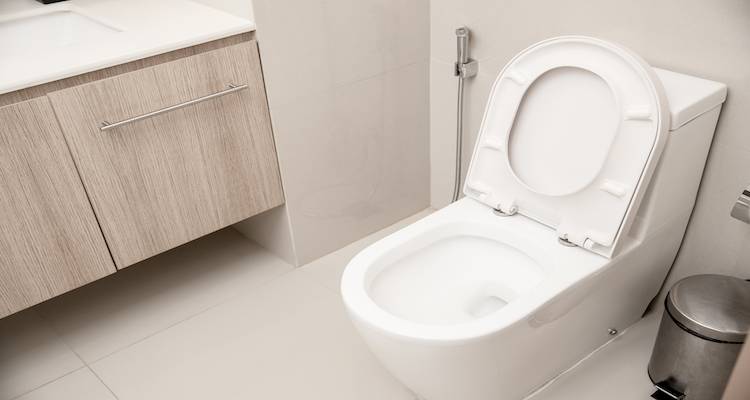
Close-coupled toilets have the cistern linked to the toilet bowl, resulting in a single, streamlined unit that incorporates both vital components.
The pipes are concealed within the toilet casings, and their modest size makes them ideal for cramming into tight areas. These toilets are often the standard budget options; they are very good quality, and they can last for a long time.
Pros
- ✔ Lots of choice and styles.
- ✔ Budget options available.
- ✔ Simple installation.
- ✔ Good for small bathrooms.
- ✔ Easy to repair.
Cons
- ✖ More to clean around.
- ✖ Pipework visible.
Gravity-Flush Toilets
When you click the flush button, water from the toilet tank falls into the bowl. The waste is eventually pushed through the trap channel by the water.
Gravity-flush toilets are silent, contain fewer parts, and require little maintenance over time. It's no surprise that they've become a massive hit on the market.
They also barely get clogged; therefore, they barely ever need to be repaired.
Pros
- ✔ Fewer parts, so easier to fix.
- ✔ Quieter flush.
- ✔ Simple installation.
- ✔ Suitable for most homes.
Cons
- ✖ Less powerful.
- ✖ More dependent on toilet bowl design.
High-Level Toilets
High-level toilets can provide a lovely traditional touch to your bathroom. They have a high-up on-the-wall cistern that must be strong or secured to avoid any problems.
High-level toilets have a long chrome flush pipe with a long pull chain flush for an elegant design.
Pros
- ✔ Great for a traditional, heritage look.
- ✔ Strong flush.
- ✔ Good for tall ceilings.
Cons
- ✖ Noisier flush.
- ✖ Needs the right wall and ceiling height.
Low-Level Toilets
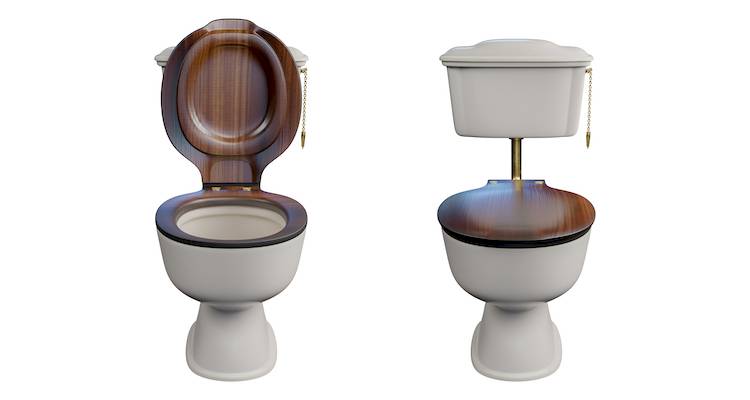
They give your bathroom a more vintage look, like the high-level toilet. Because the cistern is installed at a lower level, the flush pipe is shorter. A traditional lever controls the flush mechanism.
Pros
- ✔ Looks traditional.
- ✔ Strong flush.
- ✔ Good for awkward layouts.
Cons
- ✖ More to clean around.
- ✖ Trickier installation.
Advantages and Disadvantages of Installing a New Toilet
When installing a new toilet, the idea seems like a long and expensive process. However, with every task comes advantages and disadvantages.
This section of the article will outline the positives of replacing your old toilet and the negative aspects.
Toilets aren't built to last forever, and they'll eventually need to be replaced when a single significant problem or a series of minor issues necessitate repairs that aren't worth the money the plumbing work will cost.
So, when your toilet constantly needs repairs, it is probably time to install a new one. However, do your research and find the best toilet for you!
Pros
- Installing a modern standard model toilet today will lower your home's water usage by around 23-46 per cent.
- Newer ultra-low-flush and high-efficiency toilet models will need as little as 1.28 gallons each flush, lowering your annual water bills and decreasing your home's water usage.
- Most toilets made before 1994 will take up a lot of water as a new regulation was passed in 1994 to reduce the water usage for toilets.
- Therefore, when you replace your old toilet with a new one, it will be more up-to-date and save you money.
- Clogs and leaks can build up in terms of maintenance costs. Problems like a damaged tank can leave a toilet completely worthless, needing replacement to restore the operation and prevent water damage to your property.
- So, rather than wasting time and money on a broken toilet, changing the fixture is a long-term solution with a one-time expense that ensures your toilet is tailored to your needs and will perform properly for years to come.
- Choosing a toilet that complements the style of your bathroom may transform the space, improving its appearance and potentially increasing the value of your property if you decide to sell it in the future.
- Bathrooms with appealing designs and appealing toilets have been demonstrated to help homes sell faster and for a greater price than those with unappealing bathroom designs and unappealing toilets.
- If you have an older toilet, you may be more likely to have a flood. Of course, you could be taking good care of your "bowl," but with time, portions may disintegrate, resulting in one of the most unsettling experiences you'll ever experience.
- Toilets nowadays are more water-conscious but will also be equipped with the most cutting-edge plumbing technology. This will not only provide you peace of mind, but it will also keep your home dry and plumbing in good working order!
Cons
- The price of installing a new toilet is a factor because toilets are not cheap.
- When moving and installing your toilet, use caution. Almost all are made of vitreous China or porcelain, and if dropped, they will split or shatter.
- A toilet has been destroyed by more than one DIYer after it was dropped by mistake. Therefore, make sure you are aware of what you are doing.
- When removing the toilet, you can cause damage to yourself as they are heavy and awkward to pick up. Therefore, if you are doing it yourself, you will need a helper there if you need help carrying the heavy toilet.
How Much Does It Cost to Install a New Toilet?
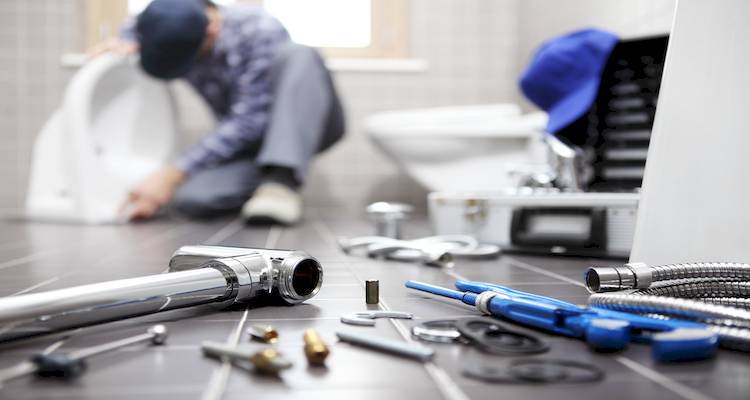
Installing a new toilet is a common home remodelling project that can improve your comfort while also increasing the value of your home.
There are several factors to consider when considering the cost of toilet installation, such as the type of toilet you are installing, the current plumbing in your bathroom, the type of cistern you are using, and the significance of preparations.
It's crucial to talk to a few different tradespeople while completing your research to ensure you're getting fair and competitive prices. You can get multiple toilet installation quotes from from local plumbers using MyJobQuote, that are fast, free, with no-obligation to go ahead.
It's also a good idea to request a complete breakdown of all prices, including labour and supplies, so you can compare them and see where costs differ.
How to Install a Toilet
Before the Job
- Get to Know The Parts — The first step when installing a toilet is to know the different parts of the toilet and which ones connect. This makes it easier, so you know which part comes with each step.
During the Job
- Block Sewer Gas — Firstly, to block sewer gas and prevent hardware from dropping in, stuff a rag into the soil pipe. The next step is to prep the floor and soil pipe.
- Check Floor Hole Size — Make sure the hole on the floor is big enough to fit the closet flange up to the collar. If the hole must be bigger, use a pencil to outline around the flange's base, then use a jigsaw to cut away the excess flooring.
- Dry Fit Soil Pipe — Then dry fit the soil pipe into the curve in the closet. Place the flange over the soil pipe and calculate the length between the finish floor and the bottom of the flange's collar.
- Dry Fit the Flange — Withdraw the dirt pipe and trim it to the previous step's dimensions with a handsaw. Scrape the cut edge with a utility knife to remove burrs. To guarantee that the flange's collar lies on the floor, dry fit the flange to the soil pipe and the soil pipe to the closet bend.
- Install Soil Pipe And Flange — Install the soil pipe and closet flange. To do this, PVC primer should be applied to the inside of the closet bend and one end of the soil pipe. Add PVC cement to the identical surfaces and twist the soil pipe into the closet bend as soon as possible. The free end of the soil pipe and the interior of the closet flange should be primed, and cement applied. Until the collar is seated on the floor, twist and press the flange onto the dirt pipe.
- Secure The Collar — Turn the collar until the slots on the right and left of the hole are aligned. Then use stainless steel screws long enough to bite into the floor to secure the collar to the floor.
- Prepare Stop Valve — Turn off the water supply valve in the bathroom. Submerge the supply line in a bucket, then cut it with a tubing cutter. Allow roughly 1 inch of pipe for the stop valve and escutcheon to be attached. Allow the water to drain from the pipe. Then remove the stem and handle from the valve.
- Clean And Flux Pipework — Using a wire-brush pipe cleaner, clean the inside and outside of the pipe, as well as the interior of the valve's inlet. Flux both locations with the same amount of flux. The escutcheon should then be placed over the supply line, followed by the stop valve, with the valve's outlet pointing upward.
- Solder The Joint — Use a propane torch, warm the supply line stop valve joint. Then remove the flame after the junction is hot enough to melt the solder and run the solder around the joint. The junction is filled when a drop of solder arrives at the bottom.
- Insert Wax Ring And Set Bowl — Place the wax ring flat side down over the flange and gently press it in place. Lower the toilet bowl onto the ring by lifting it over the flange and aligning the holes in its base with the closet bolts. Then press the bowl down into the wax ring without twisting or shaking it until the bowl's base is resting on the floor. Shim the bowl using stainless steel washers if the floor is uneven.
- Install The Tank — Make sure the large-diameter rubber tank-to-bowl washer on the tank's bottom is securely in place. From the inside of the tank, put the small-diameter rubber tank washers into the small tank holes, then the tank bolts. Lower the tank onto the back of the bowl gently, guiding the tank bolts' ends into the holes.
- Secure Tank And Flapper — Hand-tighten the nuts, alternating from nut to nut and checking to ensure the tank is level while holding each bolt head in place with a screwdriver. The ceramic will crack if you overtighten it, so be careful. Then connect the flapper chain to the tank's handle.
- Fit Supply Line And Seat Assembly — Install the supply line and the seat assembly so, curve the supply line with a tubing bender to fit between the stop-valve outlet and the tank-supply fitting. Then, with the flared end facing up, hold the pipe between these two places and mark half an inch below the outlet. This will ensure that there is enough line within the outlet. Then use a tube cutter and cut the supply line at the mark made above.
- Connect Supply Line — Tighten the plastic nut on the supply line under the tank by hand. Connect the supply line with the plastic nut, compression nut, and compression ring. Apply a thin layer of Teflon paste to the outlet threads of the valve, then seat the line in the outlet and tighten the compression ring. Then, using a wrench, tighten the compression nut.
After the Job
- Final Checks And Flush Test — To finish your instalment, insert the plastic bolts through the seat back and the bowl's seat holes, then tighten the nuts by hand. Then allow the tank to fill by turning on the main supply line and opening the stop valve. Flush six times to check for leaks.
Then your toilet is installed! There are quite a few steps to follow; however, DIY can be done when installing a toilet if you follow them easily. If it is too hard or putting you at risk, you can hire a tradesperson to help.
How Long Does It Take to Install a Toilet?
Whether you will DIY or hire a tradesperson to install your new toilet, the timescale varies. A simple procedure like replacing an existing toilet with an identical (or extremely comparable) new unit can take a plumber or tradesperson anywhere from 2 to 4 hours.
However, if you are trying to do it yourself, the timescale will extend as experience and knowledge make the job quicker. So, if you have never installed a toilet, then the process might be longer as you are also learning.
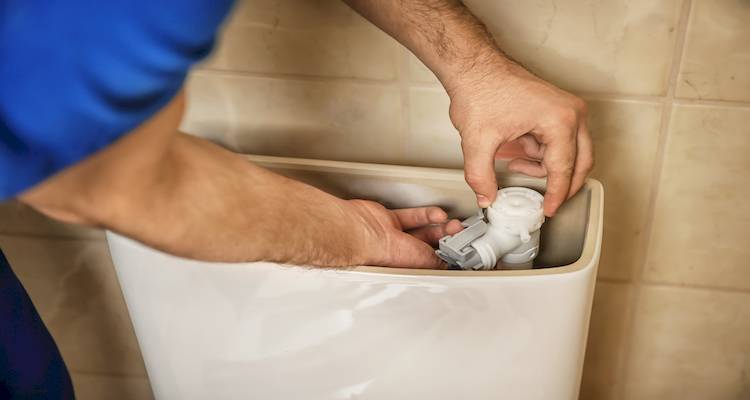
The different types of toilets influence the timescale as some are easier to install and others include different parts. If replacing the toilet flange necessitates removing tiles or opening the ceiling under the toilet, the overall duration will rise. Removing the old toilet will take more time as you have to unscrew and clean out the old screws.
Before installation, two-piece toilets must be constructed. It usually takes less than 15 minutes, but there's always the chance that a gasket between the bowl and the tank, or tank bolt gaskets, will fail to keep the water in and cause leaks. It takes longer to replace defective gaskets.
| Type of Toilet | Average Time |
|---|---|
| One Piece Toilet | 1.5/2 hours |
| Wall Hung Toilet | 2/2.5 hours |
| Low-Level Toilet | 2-3 hours |
| High-Level Toilet | 3-4 hours |
| Close Coupled Toilet | 30-40 minutes |
Building Regulations & Planning Permission for Toilet Installations
Building regulations and, where required, planning permission approval, are extremely important as you don't want to get in trouble with your council.
They are also important because if there are building regulations, then that means there are hidden risks when installing a toilet.
You don't want to damage anything or harm yourself when you can just follow regulations and, where needed, get permission to install a new toilet.
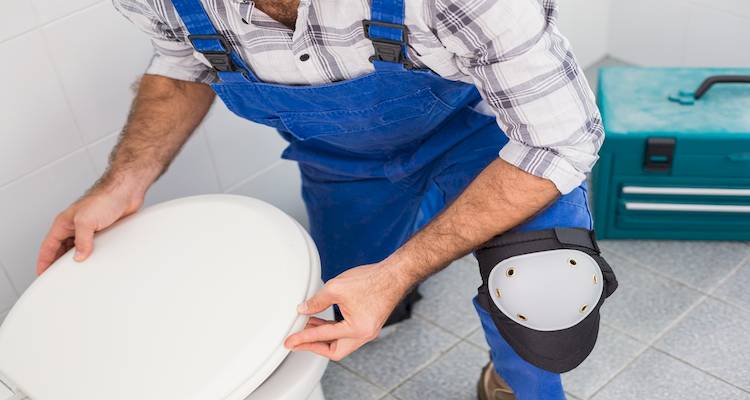
Building regulations must be followed when installing your new toilet. These are in place to ensure that key aspects of your toilet installation is done correctly, such as plumbing and drainage.
If they aren't, you'll have issues in the future, not just with the operation of your new toilet but also when it comes time to sell the house.
For work that needs building control approval, your local council or an approved inspector may issue you a building control completion certificate once everything complies with the relevant building regulations. If it does, then you can install a new toilet into your home.
When it comes to needing planning permission approval it is best to check with your council whether it is required when replacing your toilet.
For larger and complex installations, it is best to have a planning consultant on board who can debate what will apply to you; not all properties have the same regulations, and restrictions can change at any time, so having someone on hand who is up to date with the latest council restrictions will make your life much easier.
How to Clean and Maintain a Toilet
Cleaning toilets is a chore that few people enjoy. Therefore, although it is a job you hate, it is also essential.
Regular toilet cleaning removes hazardous bacteria as well as unsightly mineral or soil accumulation. Keeping your toilet clean will help prevent issues if you keep it in a brand-new condition!
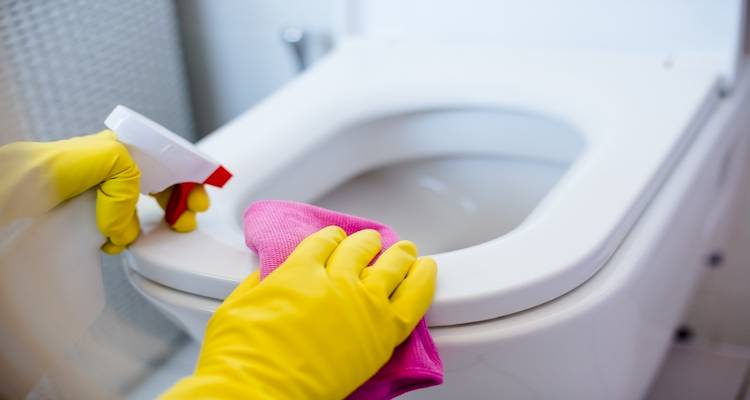
However, like with most household chores, cleaning your toilet regularly will make the job go more smoothly the following time.
To keep these items apart from the rest of your cleaning products, put them in a bucket. Cleaning the sink with the toilet sponge or washing dishes with the same rubber gloves is not a smart idea.
To start your cleaning process, including all of these items in your cleaning journey:
- Rubber gloves
- Scrub sponge
- Toilet cleaner (vinegar also works!)
- Toilet brush
- Disinfectant spray
- Cloth
- Paper towels
- Pumice stone
The best way to clean your toilet comes in five simple steps. It is the easiest method and keeps your toilet spotless every time. It is also a popular way to clean your toilet as none of the items needed is expensive.
- Begin by scrubbing the toilet bowl with a toilet cleaner and allowing it to soak. Pour a cup of vinegar into the toilet bowl if you're not using toilet cleaner. Swish the cleaner about the bowl with a brush as quickly as possible to scrub the bacteria off.
- If the toilet is very filthy, wipe it down with paper towels before tossing them in the bin. This will allow the outside of your toilet to look brand new! Spray an all-purpose disinfectant over the toilet's outside as the cleaning solution soaks in.
- After that, wipe the toilet's outside using a cleaning sponge. While you're there, pay care to the toilet's base and floor. Remove the seat and clean it separately if you have a modern toilet with a quick-disconnect toilet seat.
- After cleaning the exterior, clean the toilet bowl with a toilet brush. Use a pumice stone to get rid of any hard water rings or stains.
- Do you know where the water rushes out beneath the rim? Many people overlook this since it is out of sight. Don't overlook this location! Clean the bottom of the rim with your brush or sponge.
Using this method allows every part of your toilet to be cleaned and looking brand new, which is why it is the best.
There are other methods to clean your toilet that you can see on TikTok as many people have created a cleaning account to show ways to clean your home, including your toilet.
Questions to Ask When Hiring a Toilet Installation Specialist
1. What Are Their Average Costs to Install a Toilet?
This will allow you to know how much you are going to be spending just to install the toilet. If you do your research and ask a few toilet specialists, you will be given an estimate of what you are paying.
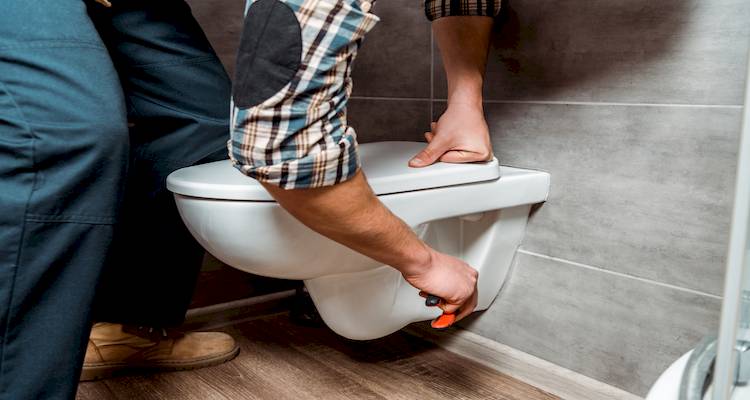
2. Do They Have Any Previous Employment References?
If you discover a toilet specialist who is prepared to show you examples of their previous work. Take the time to look at their previous work images if they have them.
It also reduces the chances of being scammed as they show you their past jobs and reduces worry because you know the job will be done correctly.
3. What Kind of Guarantee Do They Offer for Their Work?
Make sure you receive a formal guarantee of work or examine their usual guarantee. It's even better if their guarantee is backed by insurance, as you'll be protected if the tradesman goes out of business.
It's critical to review the promises because you don't want to discover an issue a few weeks after your normal guarantee period has expired, and it will cover the costs if the damage comes up again.
FAQs
How Long Do You Need to Wait to Use the Toilet After Installation?
Which Toilet Is the Best?
What Are the Signs That You Need a New Toilet?
- Constant repairs
- Cracks in the bowl or tank
- Constant running
- The trouble with flushing, clogging or overflowing
- Wobbling toilet
- Round toilet bowl
- High water bill



